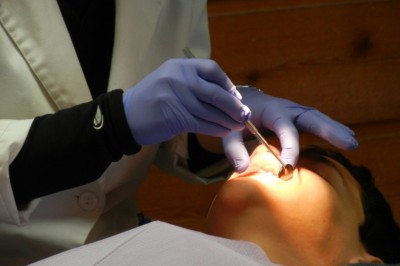Templar Arthritis Explained
You may hear someone complain of being diagnosed with templar arthritis and have wondered how this is possible. After all, the only joint in the temple itself is the fused type composed of skull bones. Most likely, this person is complaining of a condition called "temporal arthritis" which affects blood vessels, not the bones and joints. The other possibility is that their arthritis may have affected the TMJ or temporal-mandibular joint. These are very different conditions and have different treatments and symptoms. True templar arthritis would better be called temporal arthritis or most likely TMJ arthritis. The TMJ is where the large lower jaw attaches to the skull with a hinge-like joint. The main symptom would be jaw pain and evidence on x-rays of degenerative changes in that joint. TMJ syndrome can also exist with pain but no degenerative changes. This is treated with surgery or dental appliances, physical therapy, analgesics and sometimes anti-inflammatory drugs. With TMJ arthritis, the type of arthritis needs to be diagnosed to arrive at a treatment plan. TMJ arthritis can result from infection, injury or a systemic arthritic process. Temporal arthritis (TA) is a more serious condition because it can progress to vision loss in some cases. Some estimate as many as half of TA patients will have vision loss eventually. The condition is also called giant cell arthritis from the appearance of the cells that infiltrate the walls of medium sized blood vessels throughout the circulatory system. The temporal artery is such a vessel and in TA it and surrounding vessels become swollen and very painful. Headache is the most common symptom, but there can also be symptoms such as low grade fever, claudication of the jaw, and even signs of meningitis. TA is four to six times more common in women that in men and more common in Caucasians than in other races. It also occurs more often in colder climates. Along with pain and the high risk of vision loss is the associated risk of aneurysms elsewhere in the body. People with TA have 17 times the risk of chest aneurysms and double the risk of abdominal aneurysms. This condition is normally seen after the age of 50 with the average age of onset being closer to 70 years old. Treatment is usually successful if started as soon as possible and consists of the use of steroids such as prednisone or Medrol or immune suppressants like azathioprine and methotrexate. Maintenance therapy is usually needed for at least a year or two. For some reason, the condition usually goes away after a couple of years. Prompt treatment relieves the pain and helps to prevent blindness. ------ Resources: arthritiscures.us/knox-gelatin-for-arthritis/knox-gelatin-for-arthritis.htm





























